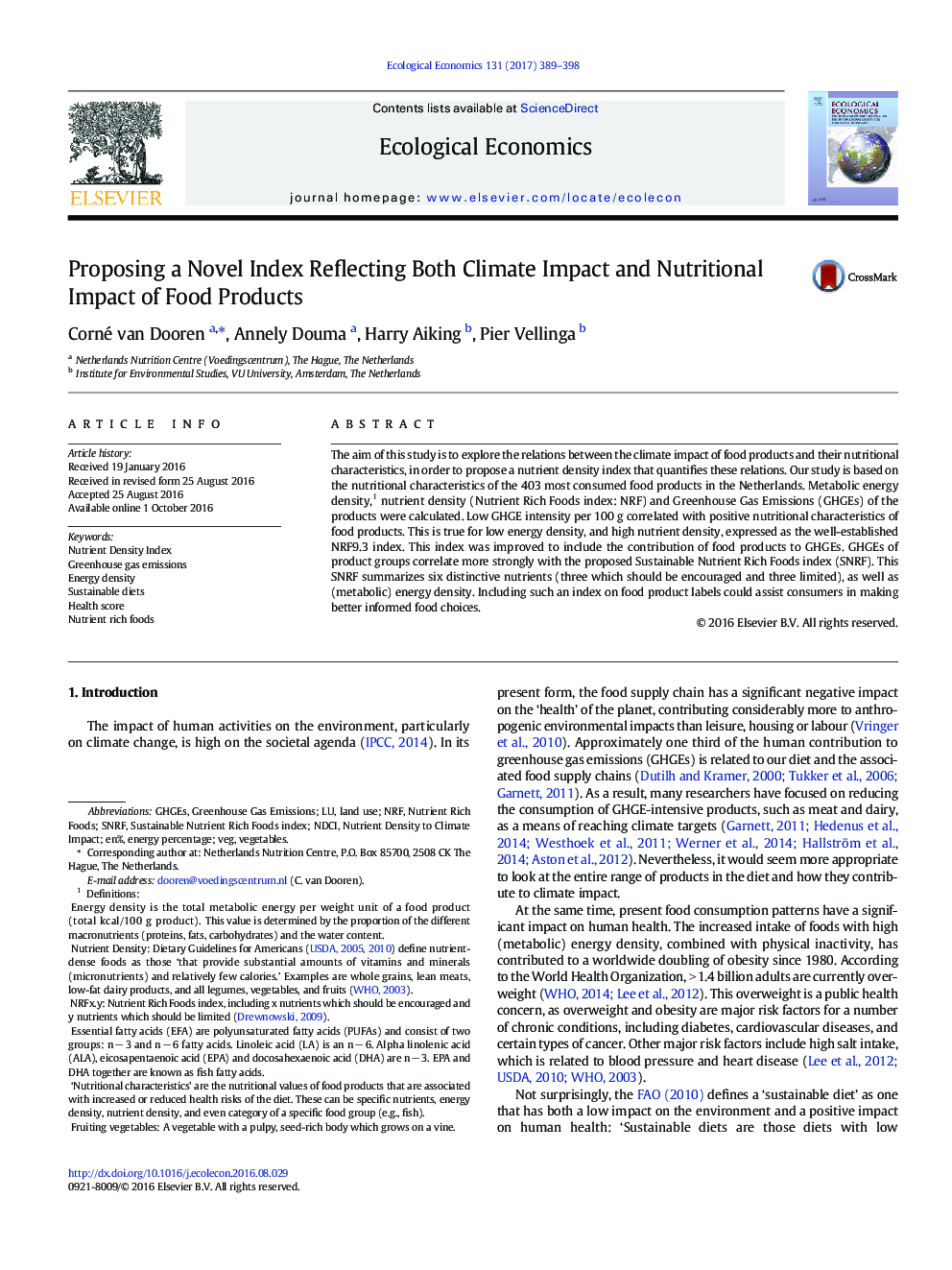| کد مقاله | کد نشریه | سال انتشار | مقاله انگلیسی | نسخه تمام متن |
|---|---|---|---|---|
| 5048897 | 1476348 | 2017 | 10 صفحه PDF | دانلود رایگان |
• Greenhouse gas emissions tend to be higher in the production of energy dense foods and lower in nutrient dense foods.
• These emissions show significant correlations with 15 nutrients, including saturated fat, animal protein and sodium.
• We propose a ‘Sustainable Nutrient Rich Foods’ index, which summarizes both climate and nutritional impacts of foods.
The aim of this study is to explore the relations between the climate impact of food products and their nutritional characteristics, in order to propose a nutrient density index that quantifies these relations. Our study is based on the nutritional characteristics of the 403 most consumed food products in the Netherlands. Metabolic energy density,1 nutrient density (Nutrient Rich Foods index: NRF) and Greenhouse Gas Emissions (GHGEs) of the products were calculated. Low GHGE intensity per 100 g correlated with positive nutritional characteristics of food products. This is true for low energy density, and high nutrient density, expressed as the well-established NRF9.3 index. This index was improved to include the contribution of food products to GHGEs. GHGEs of product groups correlate more strongly with the proposed Sustainable Nutrient Rich Foods index (SNRF). This SNRF summarizes six distinctive nutrients (three which should be encouraged and three limited), as well as (metabolic) energy density. Including such an index on food product labels could assist consumers in making better informed food choices.
Graphical AbstractThe Sustainable Nutrient Rich Foods-index (SNRF) is a novel proposed nutrient density index, based on six distinctive nutrients (three which should be encouraged and three which should be limited), combined with (metabolic) energy density. By combining health-related nutritional characteristics and greenhouse gas emissions of foods, we can create three general groups: red, indicating foods with a negative nutrient profile and high climate impact; amber, indicating foods with a moderate nutrient profile and medium climate impact; and green, indicating a positive nutrient profile and low climate impact. The borders of the amber group are defined by the average GHGE ± 1 SD (X-axis 2.44 ± 0.49).Figure optionsDownload high-quality image (98 K)Download as PowerPoint slide
Journal: Ecological Economics - Volume 131, January 2017, Pages 389–398
